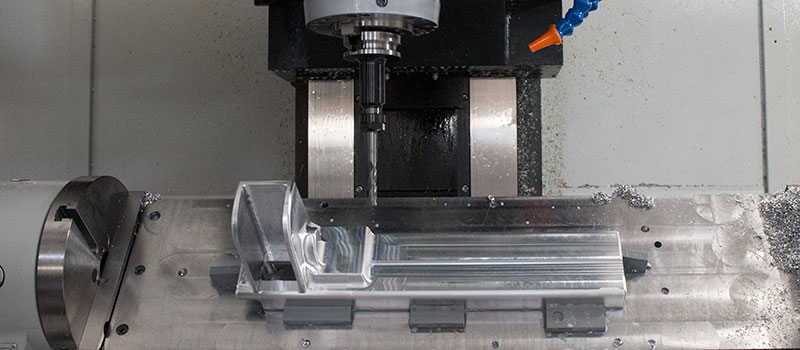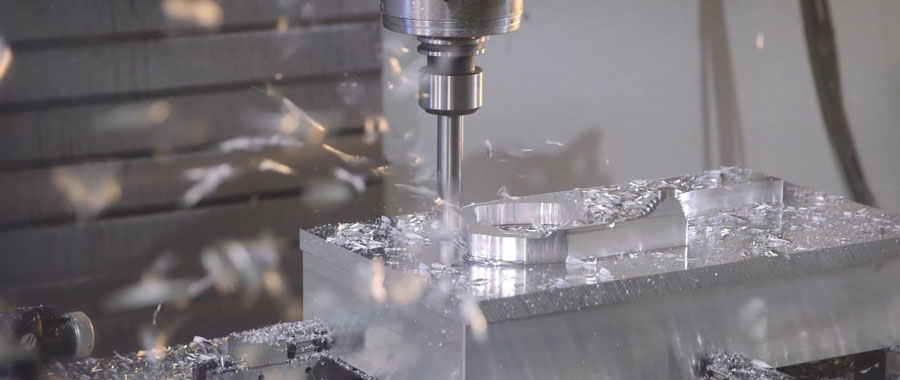CNC machining is a subtractive manufacturing method that uses cutting tools to remove material from a piece of raw material or pre-existing part. CNC machining centers generally use the most advanced 5-axis machine tools, which greatly shortens the turnaround time by eliminating intermediate settings and enabling undercut and off-axis features.
From simple flat parts to demanding and highly complex surface geometries, choosing the right CNC machine tool is crucial. Different types of CNC machine tools can process different parts. The type of machine used (CNC lathe, 3-axis CNC milling machine or 5-axis machining center) usually depends on the complexity of the part, geometry, size, tolerance, end use and material of the product type.
CNC Machining Materials
Material is often the second most important factor affecting the cost of CNC machining. When you can strike a balance between the cost of the material and its machinability, the most cost-effective machining will be achieved. When it comes to the machinability or the ease of the material in the process, the stronger the machinability of the material, the faster the production of parts and the lower the service cost. Plastic materials and softer metal alloys are generally easier to process. To determine the inherent machinability of the material, you can refer to the various material properties in the CNC machining chart.

CNC Machining Time And Labor
Technicians programming CNC machine tools When manufacturing using CNC machining, usually the biggest cost factor is the time required to manufacture the parts. Complicated large parts require longer processing time, thereby increasing the overall cost.
Complex geometries that require multi-axis machining require longer time, and complex constructions usually rely on manual manufacturing and post-processing. If each side of the part design contains different features, it usually needs to be manually repositioned. Sometimes parts that need to be repositioned with a new fixture are used to process these features. The more processes related to the realization of the design, the more expensive the part.
The cost of CNC machining decreases significantly as the number of parts increases. In the early stages of the project, it may be advantageous to consider the lower unit price due to the large number of machined parts.
CNC Part Design
Processed aluminum parts can be produced quickly through optimized design, almost no manual repositioning is required, which can significantly reduce the cost of processed parts. Specifically, the following main design features can be considered:
Design features with an aspect ratio of less than 4 are ideal. Smaller features require more machines to pass through and are prone to vibration, thereby improving accuracy and processing time.
The depth of the cavity is often best when cutting the cavity with a depth up to 2-3 times its diameter. If possible, make the depth less than 4 times the diameter of the tool.
The wall thickness should be between 0.8-1.5 mm. Thinner walls require multiple passes with the tool at low cutting depths. Thin-walled features are prone to vibration, which can be challenging in precision machining and increase machining time.

Holes of standard drill size can be completed quickly, and holes of non-standard size must be machined with an end mill, which will increase the total cost and processing time. The thread should be designed such that the minimum length is 1.5 times the hole diameter and the maximum length is 3 times the hole diameter.
A length to diameter ratio of 3:1 or smaller internal corner radius can ensure reduced milling times, no need to change tools and shorten the overall machining time.
When trying to reduce the cost of CNC machining orders, it is best to strike a balance between cheap materials and easy machining and optimized standardized design. Ensuring that all functions in the design are critical to key projects can simplify the overall scope. The more complex the requirements for the mechanic, the lower the efficiency of the solution.
Conclusion
Broadly speaking, due to its design, specific dimensions and requirements, complex parts require more consideration during the machining process. When parts are in the design process, design engineers should always strive to build simple, easy-to-produce parts whenever possible. The simpler the design, the easier it is to manufacture and the cheaper the indirect costs.
Mechanical designers have been thinking about how to create designs that require fewer components while providing maximum performance, which can reduce costs while ensuring efficiency and higher yields. CNC machining is an effective manufacturing method for producing parts and prototyping. If the key design details and processing capabilities are not well balanced, cost-effectiveness may be lost.


